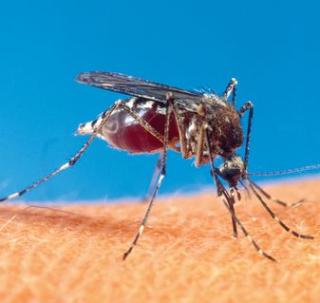Mosquito-Borne Diseases

It's the Law! - When it has been brought to the attention of the local Director of Health that rain barrels, tin cans, bottles, or other recepticles or pools near human habitations are breeding mosquitoes, the Director is required under Conn. Gen. Statute Section 19a-213 to investigate and cause any such breeding places to be abolished, screened or treated in such manner as to prevent the breeding of mosquitoes. The Director or his Agent may enter any premises in the performance of his/her duties under this provision.
Eastern equine encephalitis virus (EEEV) is transmitted to humans by the bite of an infected mosquito. Eastern equine encephalitis (EEE) is a rare illness in humans, and only a few cases are reported in the United States each year. Most cases occur in the Atlantic and Gulf Coast states. Most persons infected with EEEV have no apparent illness. Severe cases of EEE (involving encephalitis, an inflammation of the brain) begin with the sudden onset of headache, high fever, chills, and vomiting. The illness may then progress into disorientation, seizures, or coma. EEE is one of the most severe mosquito-transmitted diseases in the United States with approximately 33% mortality and significant brain damage in most survivors. There is no specific treatment for EEE; care is based on symptoms. You can reduce your risk of being infected with EEEV by using insect repellent, wearing protective clothing, and staying indoors while mosquitoes are most active. If you think you or a family member may have EEE, it is important to consult your healthcare provider for proper diagnosis. Click here for more information.
West Nile virus (WNV) is a potentially serious illness. Experts believe WNV is established as a seasonal epidemic in North America that flares up in the summer and continues into the fall. This fact sheet contains important information that can help you recognize and prevent West Nile virus. Click here for more information.

